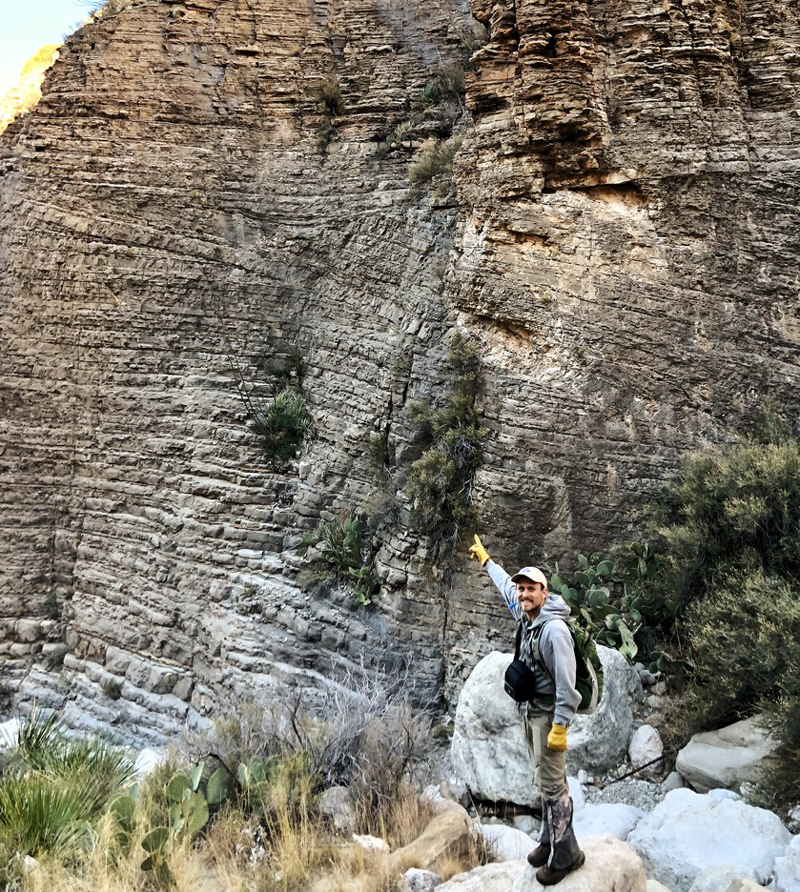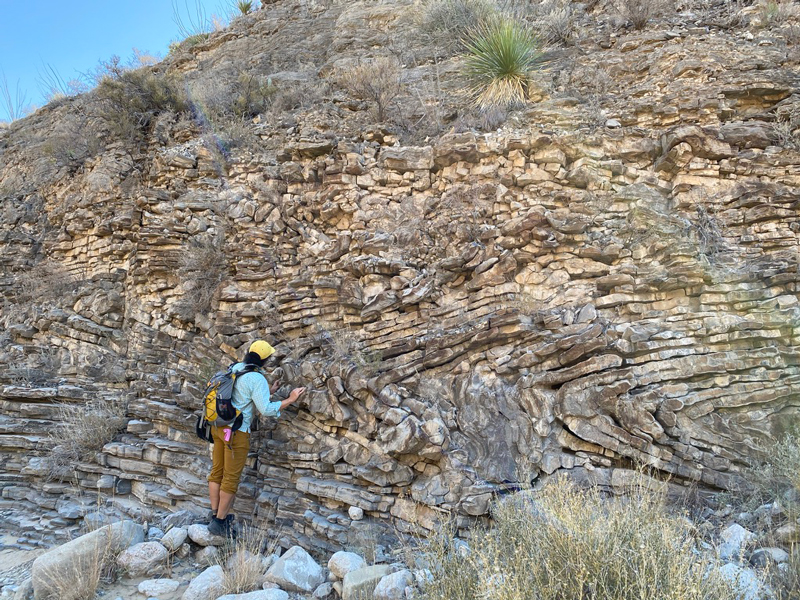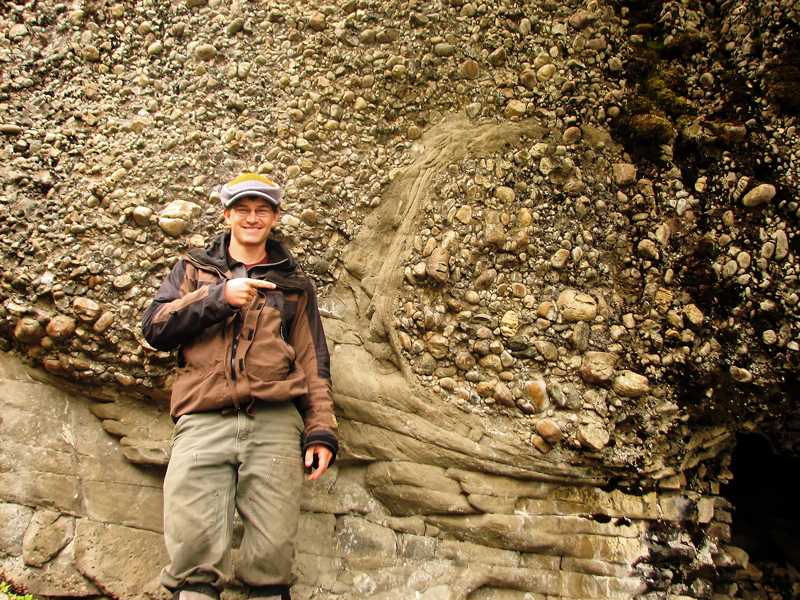A trip to Yellowstone as a child inspired Zane Jobe to become a geologist. Join Zane as he shares his story and his favorite outcrops.

Truncation surfaces possibly from mass failures - Bone Springs Formation
When I was a little kid, my mom used to get angry when she washed my jeans, as there was always rocks in my pockets! My dad is in the aggregate business, so I was always around rock quarries as a kid, and a trip to Yellowstone when I was ten years old really cemented (no pun intended) my love for geology. I had seen obsidian before in the Davis Mts. of west Texas near where I grew up, but the obsidian at Yellowstone was spectacular and combined with the other geological wonders there really inspired me.
I have plenty of fun field work memories, but the “Type II fun” field work is most memorable – Type I fun is fun while it happens, and Type II fun isn’t fun at the time, but then is fun when you recall it later. Most of my Type II fun fieldwork experiences are from southern Chile - my field partner Anne Bernhardt and I shared plenty of Type II fun trying to measure sections in the Patagonian wind (and rain, and sometimes snow). But, the outcrops in the Magallanes Basin where we worked were incredible for defining facies relationships in submarine-channel deposits, and they were within sight of the Torres del Paine national park, which is just spectacular.

Carbonate submarine landslide deposits in a cutoff formation - Guadalupe Mts.
It changes depending on what I am working on, but currently, my two favorite outcrops are where the CoRE research group is working now: (1) The Guadalupe Mts. in west Texas, and (2) The Point Loma Formation in southern California. The Guadalupes are just one-of-a-kind in terms of the preservation of a mixed carbonate-siliciclastic depositional system, and the variety of sedimentary processes is what keeps me returning there to work on new projects. In the last few years, Wylie Walker worked on outcropping slope deposits of the Bone Spring Formation, and currently, Hanaga Simabrata is focused on spectacular outcrops of submarine landslide deposits in the Cutoff Formation. The outcrops themselves are very useful for defining relationships between depositional processes and the resultant facies architecture, but the application to current oil and gas exploration in the Permian Basin make the Guadalupe Mts. an even more awesome place to work – to be able to directly impact business decisions is really why we work so hard!

The Point Loma Formation is quite similar in this aspect – it is used as an analog for reservoirs in submarine lobe deposits (e.g., Wilcox, Permian Basin, North Sea). The Point Loma is unique in that the long-distance exposures allow us to perform detailed correlations of turbidite event-beds for hundreds of meters, and apply those findings to help better predict lateral heterogeneity for horizontal well predictions, or to better parameterize reservoir models for conventional drilling targets. The Point Loma is also a very accessible (and beautiful) place for field trips, and I lead several field trips to these outcrops every year (well, almost every year – thanks, 2020).
For the future, I plan to keep working in the Guadalupe Mts., California, and may be starting a new project on outcrops in Kazahkstan next year!
I don’t typically read geology books in my spare time – I tend to read fiction and sci-fi as a release from the technical reading/writing that I do all day. Right now I am reading the Culture series by Iain A Banks and it is pretty great.